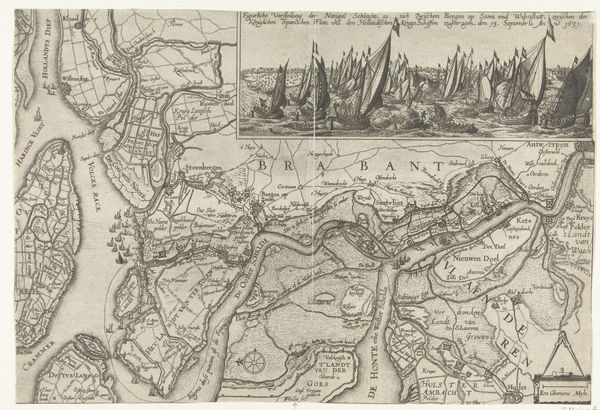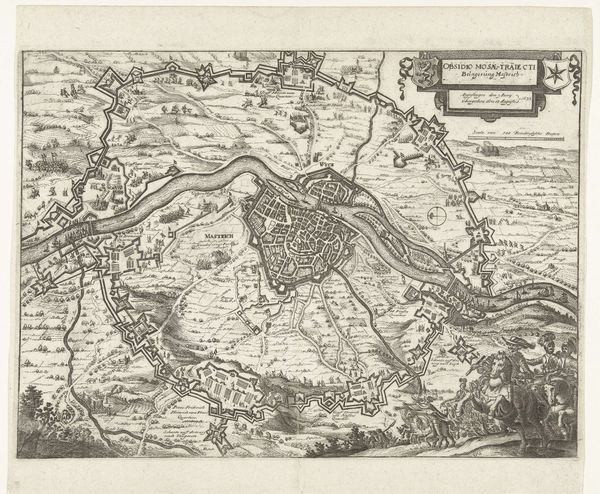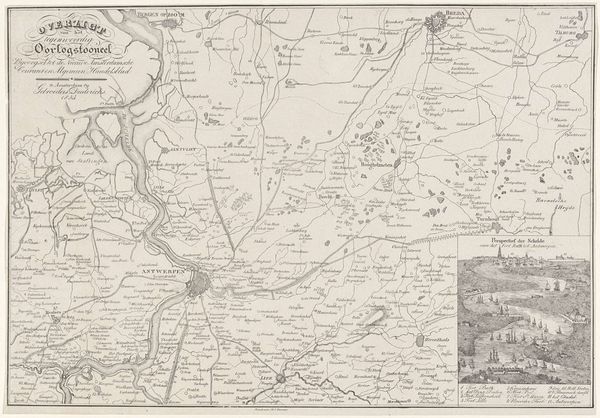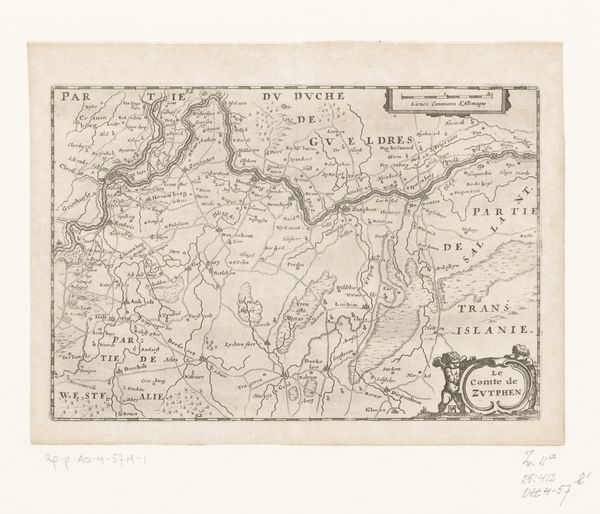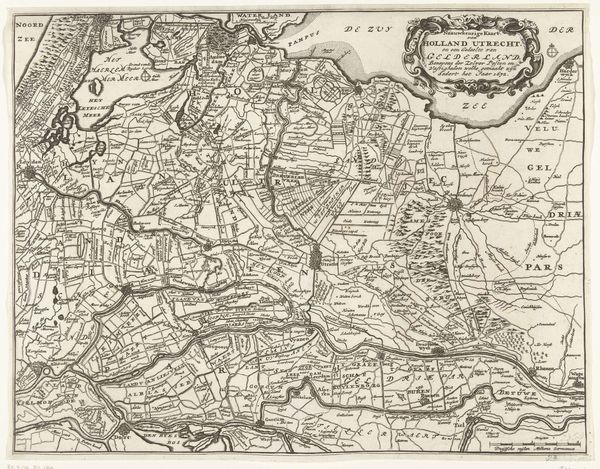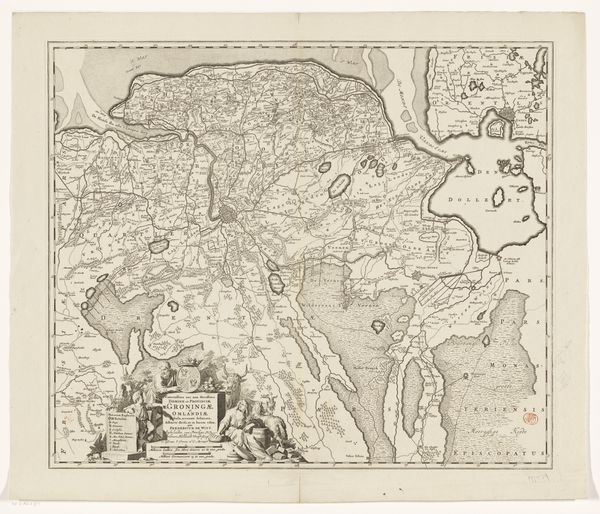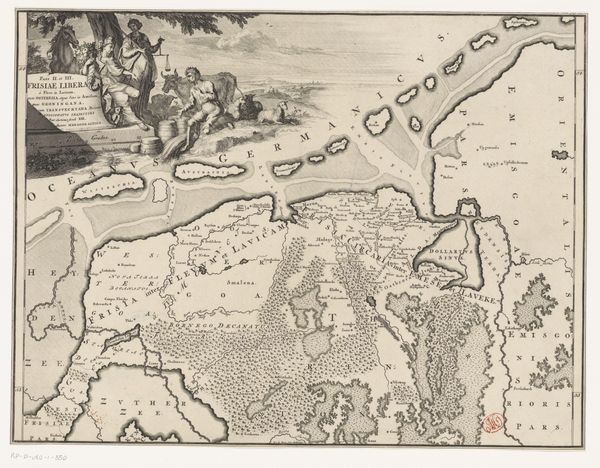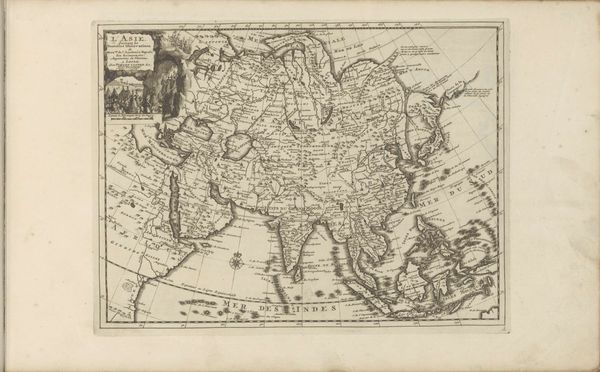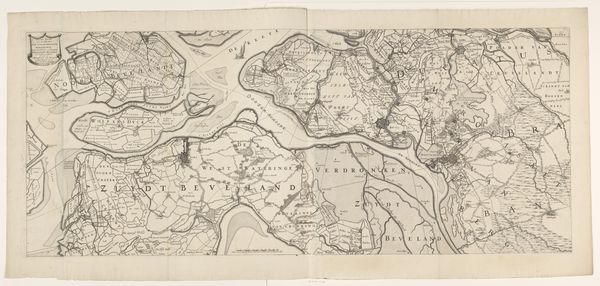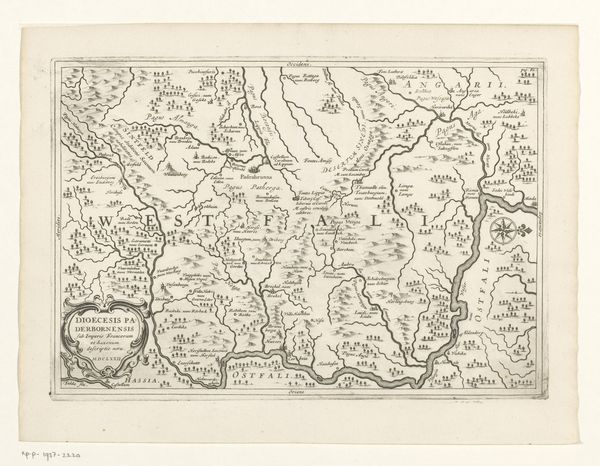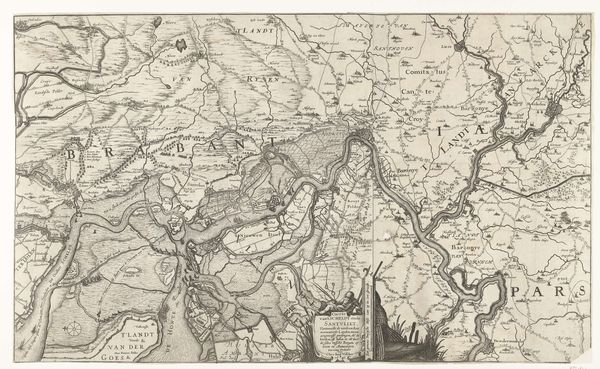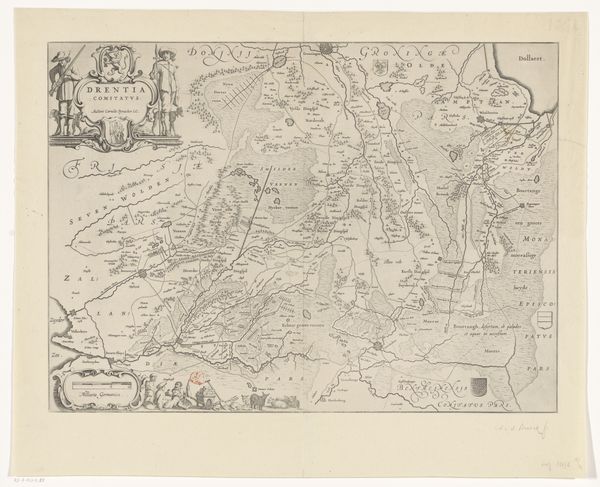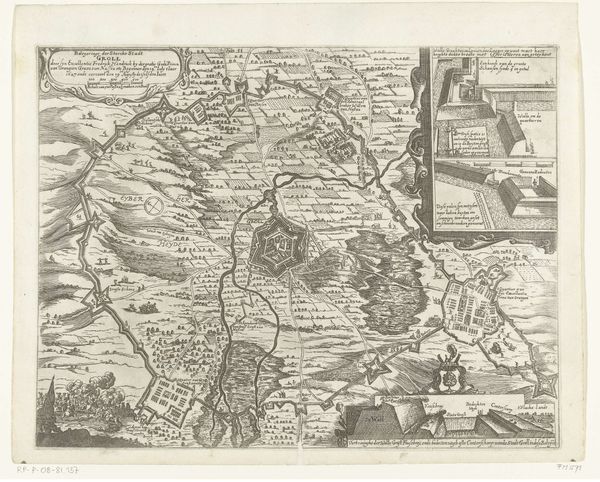
Kaart van het gebied tussen Bergen op Zoom en Antwerpen en de overwinning op het Slaak, 1631 1627 - 1631
0:00
0:00
drawing, print, ink, engraving
#
drawing
#
pen drawing
# print
#
pen illustration
#
pen sketch
#
landscape
#
ink
#
cityscape
#
genre-painting
#
engraving
Dimensions: height 400 mm, width 658 mm
Copyright: Rijks Museum: Open Domain
Editor: Here we have Claes Jansz. Visscher's "Kaart van het gebied tussen Bergen op Zoom en Antwerpen en de overwinning op het Slaak, 1631," created between 1627 and 1631. It's a detailed print, seemingly an engraving or etching. It strikes me as both a functional map and a visually rich representation of a historical event. What aspects of this piece stand out to you? Curator: What strikes me is the intricate labor involved in its production. Look closely. This isn't just about representing geographical space; it's about the means of communicating power and territorial claims through printmaking. The choice of engraving, with its demanding process, signifies authority and permanence. Editor: That’s a really interesting point. So, the medium itself becomes a statement. Were maps like this widely accessible at the time, or more for the elite? Curator: Precisely. Consider the social context: the production and dissemination of such detailed maps involved skilled artisans, the economic investment of patrons, and the political motivations of those commissioning the work. Who would have had access to these? It’s likely these were for military strategists or wealthy merchants, reflecting specific class interests in territorial control and trade routes. How does thinking about that influence your perspective on the imagery itself? Editor: It does change it. I was initially drawn to the detail, but knowing who it was made for shifts my focus. It’s less about pure artistry and more about its function within a system of power. I hadn't considered the economic side of art-making so much before. Curator: Right, and by acknowledging the materiality of the print, its production and consumption, we begin to unravel a deeper understanding of its historical significance and broader cultural implications. I wonder what kind of tools and materials Visscher would have used to create such intricate details? Editor: This has made me consider how the creation of something—anything, really—is tied to all sorts of different factors and not simply creative genius. Thank you. Curator: My pleasure.
Comments
No comments
Be the first to comment and join the conversation on the ultimate creative platform.
